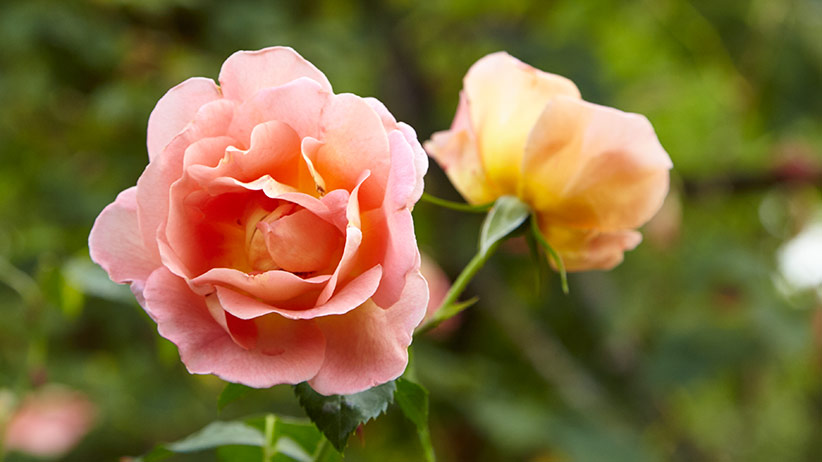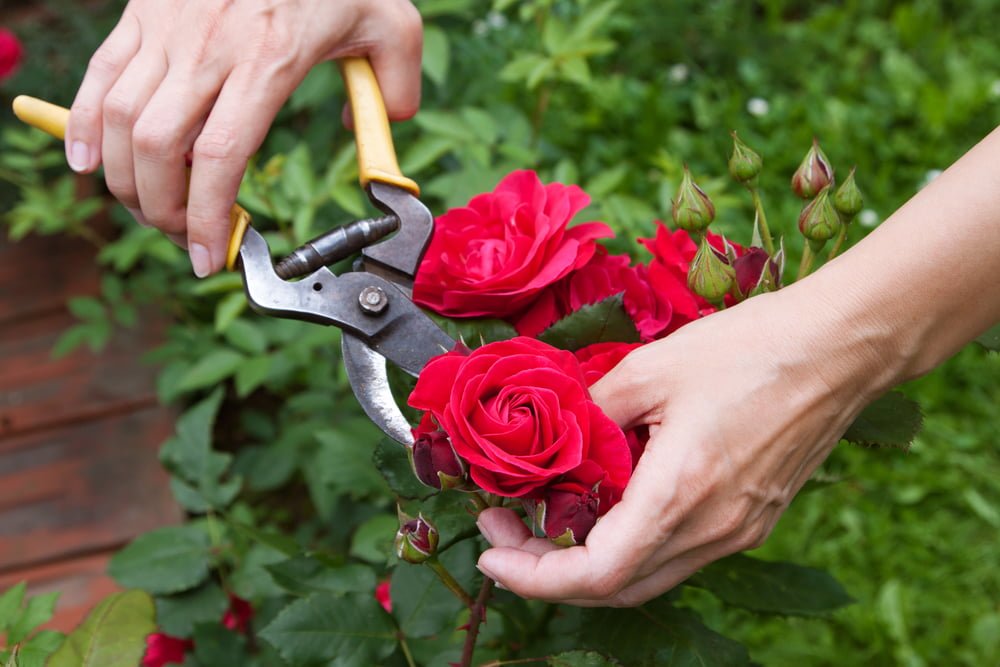Powdery Mildew On Roses - Prevention Strategies
Preventing powdery mildew on roses is easier than you think. Follow these simple steps to protect your garden and enjoy stunning roses all season long.
Nov 18, 202410.3K Shares259.6K Views

Powdery mildew is one of the most common fungal diseases affecting roses. It appears as a white or gray powdery substance on leaves stems, and flower buds, disfiguring your plants and impacting their overall health.
While the disease thrives in warm, dry conditions, it can spread rapidly, leading to weakened plants and stunted growth. Fortunately, there are effective strategies you can use to prevent powdery mildew and keep your roses vibrant throughout the growing season.
Understanding Powdery Mildew On Roses
Powdery mildew, caused by the fungus Podosphaera pannosa, is a disease that targets roses and several other plants. This fungal growth can be recognized by the powdery white coating that typically forms on the upper and lower sides of leaves, and in severe cases, can cover stems and flower buds. Although the fungus spreads quickly, following preventive measures can keep it at bay.
Conditions Favoring Powdery Mildew:
- Warm days paired with cool, humid nights
- Poor air circulation around plants
- High levels of humidity or moisture on the leaves
Keep Your Roses Healthy
The first line of defense against powdery mildew is to maintain healthy plants. Weak, unhealthy roses are more susceptible to diseases. Start by selecting strong, disease-resistant varieties and practicing good rose care techniques.
- Avoid overcrowdingyour roses. Ensure there is ample space between each plant to encourage air circulation and reduce humidity.
- Choose resistant varietiessuch as ‘Knock Out’ or ‘New Dawn,’ with better resistance to powdery mildew.
Water Your Roses Properly
Proper wateringis crucial in preventing powdery mildew. Watering early in the morning ensures that moisture on the leaves has time to evaporate before nightfall. Since powdery mildew thrives in humid, damp environments, wet foliage at night increases the risk of infection.
- Water the baseof the plant to avoid getting leaves wet.
- Avoid overhead watering, especially in the evening, as it can lead to prolonged moisture exposure on the leaves.
Organic Control Methods
While conventional fungicidesmay be an option, many gardeners prefer an organic approach. Several natural methods can effectively control powdery mildew without harming beneficial insects or plants.
- Neem oil: This natural oil acts as a fungicide and insect repellent, offering an organic solution to powdery mildew.
- Baking soda spray: Create a DIY spray by mixing one teaspoon of baking soda with one quart of water. Spray thoroughly on affected areas to kill the fungus upon contact.
- Milk spray: Mix milk and water in a 1:10 ratio. The lactic acid in milk helps suppress fungal growth. Apply regularly as a preventive measure or at the first sign of infection.
Pruning For Better Air Circulation
Pruning is one of the most effective strategies for improving air circulation and reducing humidity around your roses. By thinning out dense areas, you allow more air to move through the plants, which decreases the moisture levels that powdery mildew thrives on.
- Remove infected leavesor stems immediately upon noticing powdery mildew. Dispose of the infected material properly to prevent the spread of spores.
- Prune your rosesin early spring to encourage new growth while removing weak or damaged parts of the plant.
Keep The Garden Clean
Maintaining a clean gardenis another key factor in powdery mildew prevention. This involves removing any fallen leaves, dead plant material, or debris that may harbor fungal spores, which can linger in the soil and re-infect your plants.
- Practice good garden hygieneby cleaning up plant debris regularly, especially around the base of your roses.
- Disinfect your gardening toolsto avoid spreading fungal spores to other plants.
Preventing High Humidity
High humidity levels create the perfect conditions for powdery mildew to spread. Monitoring humidity and managing the garden environment can help keep the disease under control.
- Increase air circulationaround your roses by spacing them properly and avoiding planting them too close to walls or fences where airflow is reduced.
- Prune densely growing shrubsto open up the structure, allowing moisture to evaporate more easily.
- Avoid excessive wateringand overhead irrigation that can increase humidity around the plants.
FAQs About Preventing Powdery Mildew On Roses
How Can I Water My Roses To Prevent Powdery Mildew?
Water your roses at the base, early in the morning, and avoid overhead watering to prevent moisture buildup on the leaves.
Can I Use Home Remedies To Treat Powdery Mildew On Roses?
Yes, home remedies like baking soda, milk spray, and neem oil are effective natural treatments for powdery mildew.
Is Pruning Important For Preventing Powdery Mildew?
Yes, pruning helps improve air circulation, reducing the humidity levels that contribute to powdery mildew growth.
Are There Resistant Rose Varieties That Don’t Get Powdery Mildew?
Yes, some resistant varieties like ‘Knock Out’ and ‘Bonica’ have higher resistance to powdery mildew compared to others.
How Often Should I Apply Organic Fungicides To Prevent Powdery Mildew?
Apply organic fungicides regularly during the growing season, especially when the conditions are favorable for mildew growth.
Final Thoughts
Powdery mildew can be a frustrating problem for rose gardeners, but by following preventive measures such as proper watering, pruning, and organic treatments, you can keep your roses healthy and free from this fungal disease.
With the right care, your garden will continue to bloom beautifully throughout the season, without the unsightly powdery mildew taking hold.
Latest Articles
Popular Articles

